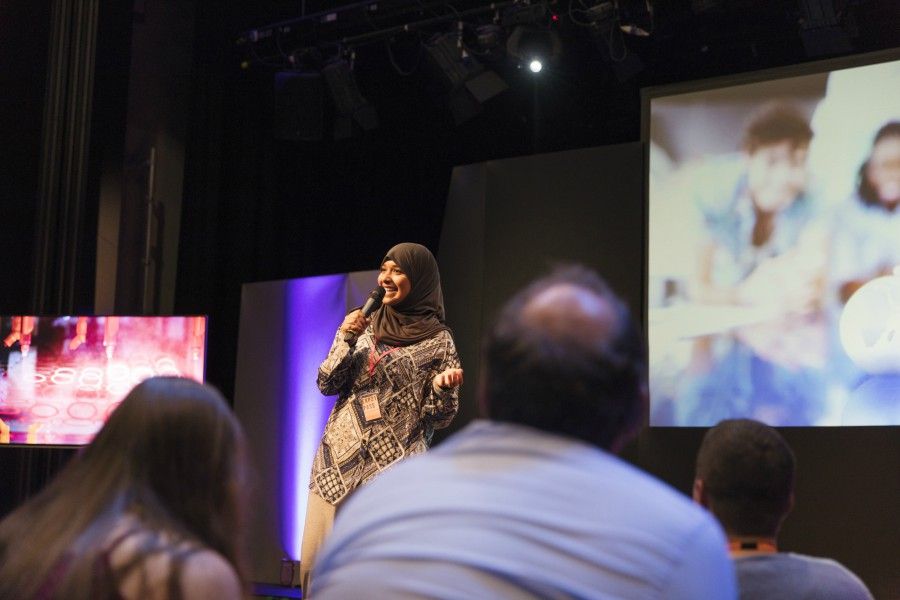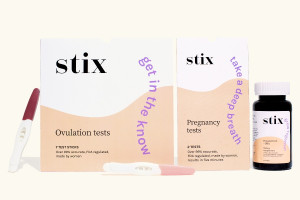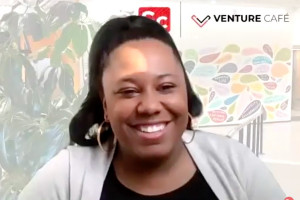I Am Fed Up With All-Male Panels. Here’s How We Change Them.
Studies show that “manels” are still the norm at conferences. It’s time women got equal billing.

Getty Images | Django
“Himposium.” “Manel.” “Colloqui-him.” “Manference.” This cheeky terminology lampoons an all too common trend: man-led conversations at industry conferences and events.
Conferences influence conversations about what’s important. They tell us the trends to focus on and hint at what the future holds. They even identify and elevate some of the best and brightest thought leaders. Yet, women aren’t getting an equal place at the podium.
The Conference Conversation (Without Women)
Conferences are a booming business. Even with the explosion of technology and remote learning, in-person conferences continue to deliver a set of experiences people want. In fact, the conference industry is so massive that if it were a country, it’d be the 14th largest in the world, exceeding the GDP of Australia, Spain, and Mexico.
Conference attendance may be strong, but when it comes to speaker selection, actions don’t necessarily match beliefs. For example, 91 percent of Americans believe gender equality is very important, yet in reality, male speakers outnumber female speakers 2-to-1 at conferences, trade shows, and marketing events. If conferences are meant to spread knowledge, empowerment, and fresh narratives for the benefit of everyone, why are men the storytellers-in-chief?
“But I see lots of women at conferences,” you might say.
While there are pockets of hope in some industries – like in higher education – where women make up 44 percent of conference speakers, there are, disappointingly, far more gaping failures. IT conferences routinely showcase two women for every eight male speakers. Even the youngest talent joining the workforce today – college grads – have a skewed view: only 31 percent of university speakers are women (and not because they turn down talks more often, or because there aren’t enough women to invite). Even in the personal development world, events like this one, led by self-help paragon Tony Robbins, feature only the male perspective.
Your Speaker Slate Says A Lot About You
The venture capital and private equity industry has one of the more pitiful records of conference representation. At these events a paltry 18 percent of speakers are women. Just consider the recent Wharton Private Equity & Venture Capital Conference, affiliated with the No. 1 business school in the world. The conference promised to “bring together leading minds in the private equity and venture capital industries […] and prominent GPs, LPs, and other industry professionals.” A look at the conference website shows the conference committee, conference co-chairs, and panels include women, but the big dogs – the keynoters and keynote moderators, do not. Apparently, only white males here qualify as “leading minds.”
If that’s not life parroting the same exact “pipeline problem” we see in the workplace, what is? You know the usual pattern: plenty of women visibly at the bottom, more women still in the middle, and none – or almost none – at the top. I, personally, am fed up with it. So, here’s what all of us can do to give women a fair shake at the big gigs.
Do The Right Thing
First, care more. If you’re planning an event with speakers and you’re not representing a diversity of gender and background among those on stage, wake up. Consider yourself on notice. You face answerability regardless of your choices, and potentially, unsought tickets, embarrassment, and damage to your reputation. If your industry is known for lacking diversity, it’s even more important for women and minorities to see representation at your keynotes, especially in fields like science and technology.
Second, when any of us – men or women – are asked to take on conference gigs that have pitiful ranks of women or diverse speakers, take this simple action: decline the gig and explain why. While you’re at it, nominate three women you know who’d be excellent speakers. You can even make your commitment public by signing the pledge developed by GenderAvenger, a community that ensures women are represented in the public dialogue. The pledge simply states, “I will not serve as a panelist at a public conference when there are no women on the panel.” It’s been signed by everyone from male senators and congressmen, to law firm partners and university professors.
Third, planners and sponsors, you can do better when it comes to scouting female talent for keynotes and main-stage events. Being overlooked was such a marked problem in science that last year that women in the industry launched the Request a Woman Scientist database, which has grown to include more than 9,000 women. The database was created as a resource where someone could quickly find a female scientist who wants to be a resource and an expert, based on her area of expertise, location, discipline, career stage and areas of interest. Planners, you most likely wouldn’t settle for a third-rate venue or caterer, so stop settling for the tired idea that “there are no qualified women.” Look harder.
Fourth, start, or continue, having these conversations about diversity and inclusion. No event should march forward without an appraisal of how representative the event lineup is. Then, we can take those conversations and turn them into action by making women feel welcome at these conferences and forums. Event coordinators and sponsors have plenty of power over developing the roster, but they also have the power to create an inclusive culture and establish a code of conduct that doesn’t tolerate discrimination or harassment. The key here, though, is to act on feedback regularly.
We Need Women At the Top, Too
Now, more than ever, young women and girls need to see people like them on stage. We need strong women to start leading hefty conversations, especially in fields where women have been underrepresented for so long. But, unfortunately, that’s where female presenters and speakers are the least common.
Hushing women’s voices stifles their success as speakers, thought-leaders and, well, leaders in general. Women deserve a seat at the table, and they deserve a microphone, too.


